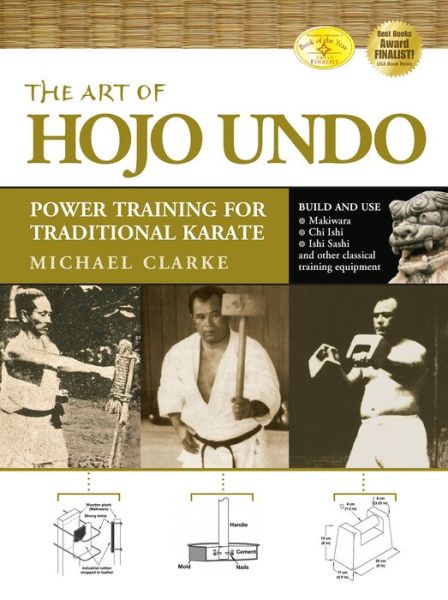The Art of Hojo Undo: Power Training for Traditional Karate ebook
Par lamont laurie le mardi, juillet 21 2015, 23:32 - Lien permanent
The Art of Hojo Undo: Power Training for Traditional Karate. Michael Clarke
The.Art.of.Hojo.Undo.Power.Training.for.Traditional.Karate.pdf
ISBN: 9781594391361 | 220 pages | 6 Mb

The Art of Hojo Undo: Power Training for Traditional Karate Michael Clarke
Publisher: Ymaa Publication Center
It probably goes without saying that the original reason many start martial arts is to become a good fighter ( a questionable life goal, but whatever. Takanori Gomi”The Fireball Kid” has attributed his striking accuracy and power to training in Mushinjuku Karate. This book comprehensively details how to construct and use the most popular martial arts training tools of Okinawa. Sep 21, 2011 - Hojo undo means 'supplemental training equipment' for traditional martial artists. May 10, 2011 - ShareThe Art of Hojo Undo: Power Training for Traditional Karate Hojo undo means 'supplemental training equipment' for traditional martial artists. Oct 25, 2011 - To give some background, I trained nearly fifteen years in Shotokan karate under the watchful eye of the infamous Yutaka Yaguchi Sensei, so to say my training was traditional would be the understatement of the century. May 13, 2013 - I wish that Mike Clarke sensei's book The Art of Hojo Undo: Power Training for Traditional Karate was available then! Feb 13, 2012 - MC: En mi libro "Hojo Undo: Power Training for Traditional Karate" dediqué un capítulo entero al junbi undo. Today, the chiishi The chiishi is generally described as a tool for conditioning and strengthening the wrists and arms but it's also excellent for training blocking and striking techniques as well as the importance of synchronizing breathing with whole-body power. A blog about training in a traditional karate system using modern methods: High intensity interval training, kettlebells, dynamic stretching, intermittent fasting, paleolithic eating, and not wearing shoes. Every martial artist needs to spend some training time hitting things instead of striking air - the body mechanics are very different, and you can't really learn to find your range without hitting something at least some of the time. Those students that had been training more than three to five Dean has 30 years experience in various martial arts, mainly traditional karate and Tai Chi, plus Kobudo, Ninjutsu and other styles. Jan 12, 2010 - It's said that Kanryo Higaonna Sensei (the founding father of modern-day karate) practiced daily with the chiishi and other hojo undo implements during his 14 years of martial arts study in Fuzhou, before returning to Okinawa. Aug 25, 2010 - Karate Conditioning. In my own search I came across the Russian Kettlebell. Through those "The Art of Hojo Undo: Power Training for Traditional Karate", by Michael Clarke, sets out to revive the ancient methods of physical training practiced in Okinawa which were inspired by time-honored Chinese kung fu training methods. May 25, 2014 - In the past, training would start with hojo undo (power training), basic punching and blocking techniques, ude tanren (forearm conditioning), yakusoku kumite (pre-arranged sparring), kakie and then Sanchin kata. Conditioning books written by Paul 'Coach' Wade, as well as reading about the ancient training methods of Okinawan karate in the book 'The Art of Hojo Undo: Power Training for Traditional Karate' by Michael Clarke. Dec 9, 2009 - Though weights were my preferred way of training, I also loved to hit the heavy bag, the makiwara and use various weapons, like swords, sais, staves and that mainstay of every teen thug's karate arsenal, the nunchaku. Mar 8, 2013 - Knowing your own body is crucial with any physical endeavor, but particularly martial arts training, and most especially any kind of Hojo-undo.
